The Selle Français (or “French saddle horse”) is a world-renowned equine athlete, especially in the field of showjumping. They compete at the highest levels of international equestrian sport, and individuals are carefully selected for performance ability.
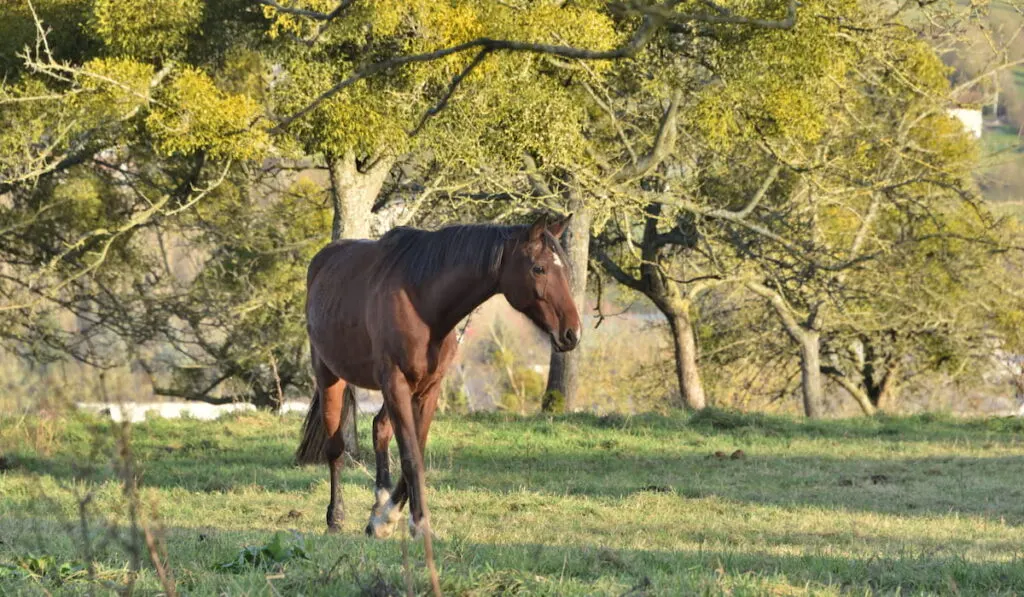
“Six keywords preside over the characterization of the Selle Français horse: Performance and Versatility, Energy, Elegance, Strength and Intelligence” (source). Keep reading to learn all about this athletic French warmblood breed.
Table of Contents
Breed History
France has a long history of producing excellent horses for riding and driving. William the Conqueror marched on England in 1066 with a cavalry filled with powerful French warhorses from Normandy, well-bred for strength and intelligence.
By the 1700s, the French introduced Arabian and Thoroughbred bloodlines to produce two types of French/English crossbreeds called “Anglo-Normans”.
A heavier draft type was used to pull heavy mail carts, and the lighter, sportier type was used for racing and serving in the cavalry.
With Napoleon’s interest in state-run stud farms, captured horses from Prussia, Egypt, and Austria improved these sport horses even further.
In the 1800s, breeders began adding bloodlines from Norfolk Trotters so that the breed could excel at both riding and driving, carrying heavy loads with great stamina and willingness.
Today, “the influence of this breeding sets apart today’s Selle Français from other European warmbloods.”
With many warmblood breeds, widespread mechanization changed our relationship with horses – and the Selle Français is no exception. After World War II, horses were largely bred for recreation and sport, rather than agriculture or military purposes.
Three types of horses existed in France at that time – the Anglo-Norman, the Charolais, and the Vendeen. In 1958, their studbooks merged to form a single French saddle horse breed (the Cheval de Selle Français), and the Selle Français as we know it was born.
Today, the Selle Français also contributes valuable genetic material to other warmblood breeds such as the Holsteiner and the Oldenburg. (source)
Selle Français Registration
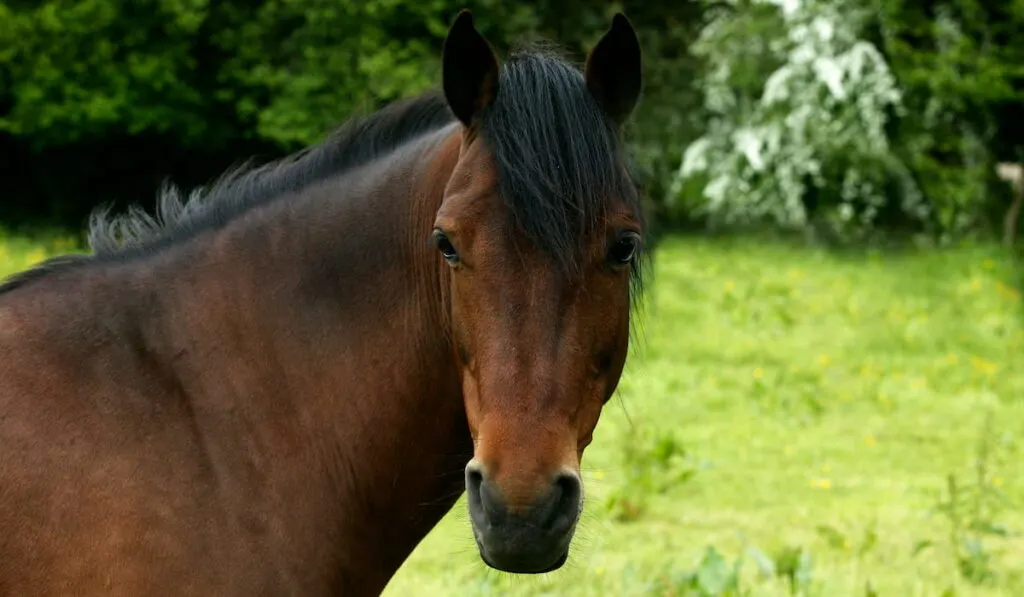
Like other warmblood breeds, the Selle Français has a somewhat open studbook, but non-registered individuals must be approved for breeding.
Crossbreeding has always been allowed with approved individuals from four other breeds: the Thoroughbred, the Arabian, the Anglo-Arabian, and the French Trotter.
Unregistered individuals with excellent show records may be registered after approval by the ANSF (Selle Français North America). This is why there may be variations between individuals in their appearance, but the focus of the breed standard is always aimed at exceptional performance ability.
Appearance
While the appearance of individual Selle Français horses can vary, they generally have some similar characteristics. Because they’re known for their athleticism, they must have excellent conformation for jumping, but they are well-built for dressage too. From the FEI:
“The head is broad, and the profile is straight or convex. The neck is long, as is the body, and the back is straight, with powerful hindquarters. Selle Français horses have a deep chest, with long, sloping shoulders. The legs are muscular and the joints pronounced.”
FEI
These horses are usually 16-17 hands, though they may be smaller or taller. They have similar conformation to that of a Thoroughbred, with long necks and an elegant appearance, but with more muscle and dense bones.
They are usually bay or chestnut in color, but can be gray or black as well. They also commonly exhibit white markings on their faces and legs.
Brand
The Selle Français brand is a six-pointed shield with “SF” in the middle. In the US, registered horses must be microchipped.
Temperament
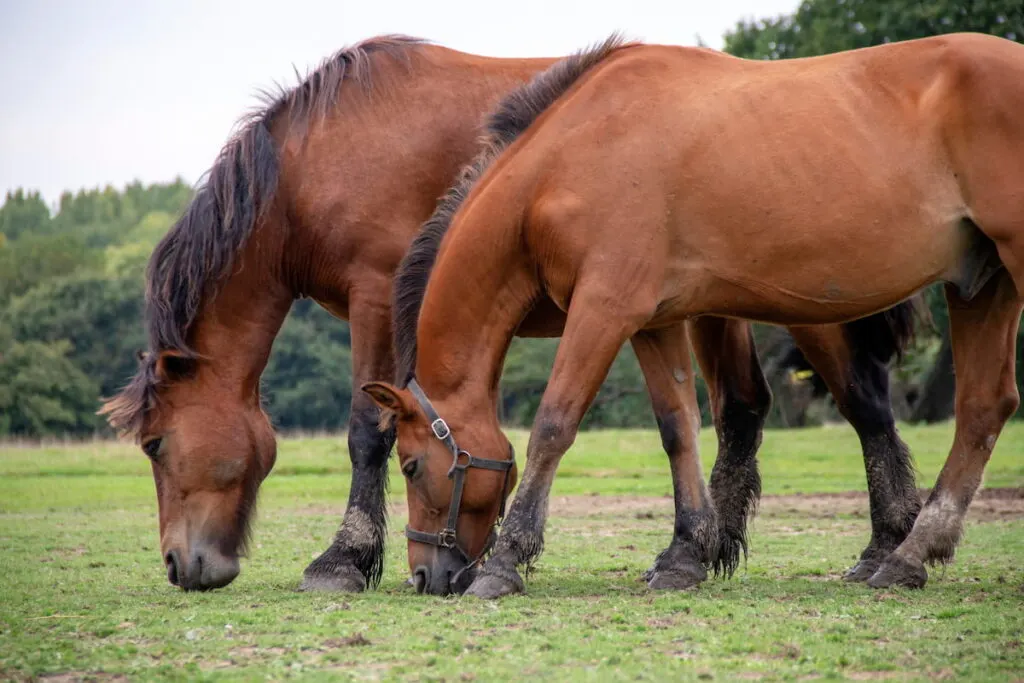
The Selle Français breed is known for being energetic and bold, but also gentle and willing to please.
Any big-jumping warmblood can be a lot to handle for beginners, but they can make excellent partners for more experienced riders looking to climb the ranks of competition.
They’re generally intelligent, trainable, and friendly. Many people who own a Selle Français describe them as “big affectionate dogs” in horse form.
Uses
While the Selle Français excels in show jumping, they’re also commonly found in the upper levels of three-day eventing. They have excellent stamina, which is important for handling the rigors of a show jumping round, cross-country course, and dressage test over the span of just a few days.
They can be less prominently featured in dressage than other European breeds, although some Selle Français are trained in the classical high-flying haute ecole dressage at the famed École nationale d’équitation (National Riding School).
The Selle Français is also used for driving, as the breed’s roots trace back to the carriage-pulling trotters of a hundred years ago. Several Selle Français horses have won national championships in vaulting and competitive trail riding as well.
In France, Selle Français compete in steeplechase racing, although there is a separate studbook for Autre Que Pur-Sang horses (translated to “other than Thoroughbred”).
These horses are usually some type of Selle Français/Thoroughbred cross, but they are very successful in the sport in France and England.
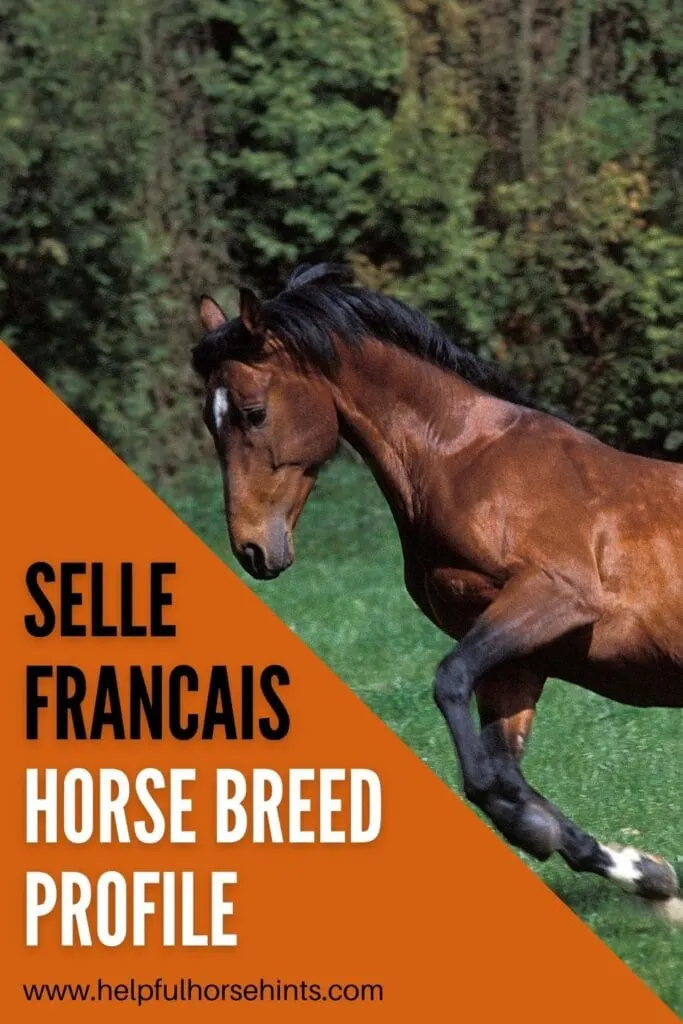
Famous Selle Français Horses
- Jappeloup de Luz. This small 15.2 hand Selle Français tossed rider Pierre Durand into the dirt during the 1984 Olympics in Los Angeles. Jappeloup would go on to win a gold medal at the 1988 Olympic Games and many other national titles, and inspired the 2013 film with the same name.
- Baloubet du Rouet. Won the Olympic gold for Individual Jumping in 2004, bronze in Team Jumping in 2000, and three consecutive FEI Jumping World Cup titles.
- Nino des Buissonnets. Won Olympic gold in 2012.
- Al Capone II, The Fellow. These brothers won the Grand Steeplechase de Paris in 1997 and 1991. French rules allow crossbreeds to compete in steeplechase races, and both of these horses were sired by Selle Français stallion, Italic.
- Neptune Collonges. Winner of the 2012 Grand National steeplechase race.
Health
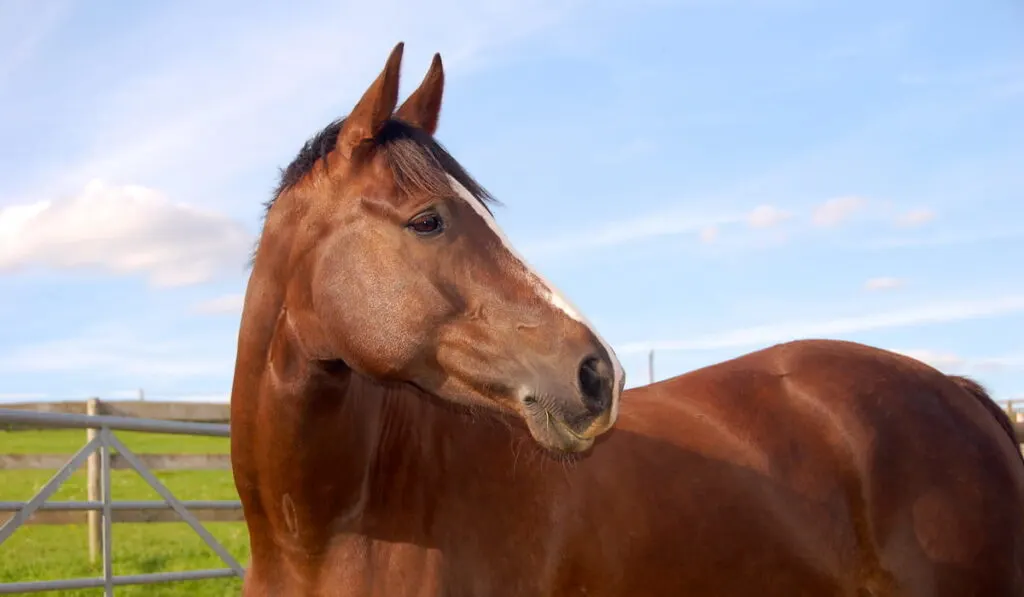
These warmbloods are fairly healthy, especially with the proper care and attention. However, the rigorous schedule of an athletic competition horse can lead to leg and feet problems later in life. But, they are generally hardy and sound, and can live well beyond their twenties.
Cost
The price of a high-level Selle Français with a proven show record is not cheap. While the breed is popular at the international level, they are less commonly found in the United States than in Europe.
A well-bred Selle Français that has been lightly started under saddle can cost upwards of $15,000 – $50,000. A Selle Français competing at the Olympic level can easily fetch $400,000 (or more!).
They often must be purchased directly from France and shipped to the US, which can cost thousands of dollars.
However, some Selle Français horses prefer a lower-key lifestyle instead of a big-time show circuit.
Some breeders will have broodmares or geldings available for amateur competitors or experienced lesson programs for $5,000 – $10,000. These gems can be hard to find, but they are sometimes available!
Selle Français Fun Facts
- Fashion mogul and actress Mary-Kate Olsen regularly competed on the international FEI circuit with her Selle Francais gelding Prem’ Dollar Boy. (source)
- While bay and chestnut are the most common colors, they can sometimes appear in a light grey/roan color informally called “rose grey”.
- During the 2012 Olympics, 11 different Selle Français competitors could trace their ancestry back to one stallion – Quidam de Revel.
- As of 2012, there are over 8,000 Selle Français breeders listed in France, but most of them are small farm operations with only one or two broodmares.
- Nearly 7,000 Selle Français foals are born each year in France, and there are 700 approved stallions for breeders to choose from.
- Genetic breed makeup for modern Selle Français horses include 33% Thoroughbred, 20% Anglo-Arabian, 2% French Trotter, and 45% Selle Français bloodlines. (source)

